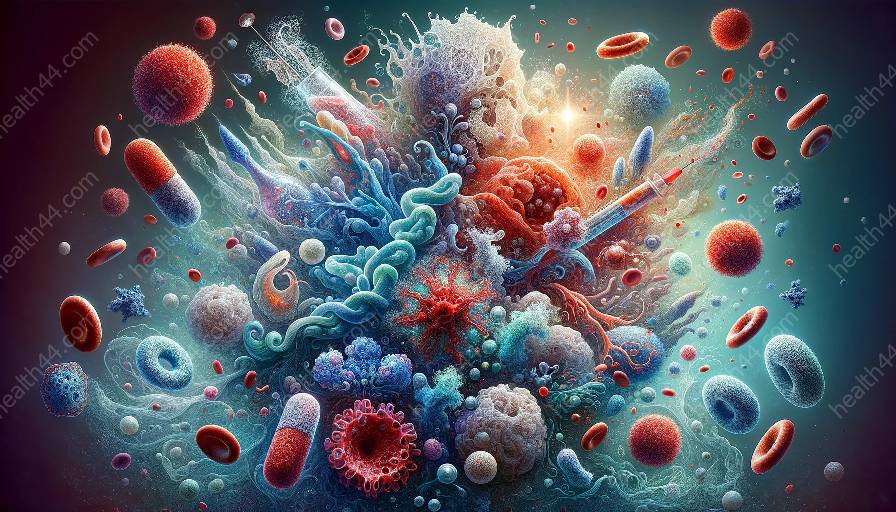Immunoglobulins (Ig), also known as antibodies, play a crucial role in the immune system, acting as key components of the adaptive immune response. These proteins are highly diverse, with the ability to recognize and bind to a wide range of antigens. This diversity and specificity are heavily influenced by genetic factors, which orchestrate the processes of immunoglobulin gene rearrangement, somatic hypermutation, and class switching. Understanding the genetic underpinnings of immunoglobulin diversity and specificity is vital for unraveling the complexities of the immune system and its role in health and disease.
Immunoglobulins and Their Molecular Structure
Immunoglobulins are Y-shaped glycoproteins produced by plasma cells, a type of white blood cell. They are composed of two identical heavy chains and two identical light chains, linked together to form a structure known as a monomer. Each chain consists of constant (C) and variable (V) regions, with the V regions being crucial for antigen binding and specificity. The variable regions of both heavy and light chains form the antigen-binding site, which determines the specificity of the immunoglobulin.
The genes encoding immunoglobulin heavy and light chains are located on different chromosomes. The heavy chain gene locus is found on chromosome 14, whereas the light chain gene locus is located on chromosome 2 (kappa) and chromosome 22 (lambda). The genetic diversity of immunoglobulins arises from the multitude of gene segments and the processes that lead to their recombination.
Immunoglobulin Gene Rearrangement and Diversity
The primary source of immunoglobulin diversity is the rearrangement of gene segments during B cell development. B cells undergo a series of genetic recombination events, which result in the production of unique immunoglobulin receptor molecules. This process involves the random recombination of variable (V), diversity (D), and joining (J) gene segments, leading to the vast array of possible combinations.
The combinatorial diversity is further enhanced by the addition or deletion of nucleotides at the junctions between the recombined gene segments, a process known as junctional diversity. This further increases the variability of the antigen-binding sites, allowing for the recognition of an extensive range of antigens.
Somatic Hypermutation and Affinity Maturation
Following antigen exposure, mature B cells undergo somatic hypermutation, a process in which the variable regions of the immunoglobulin genes undergo random point mutations. These mutations lead to changes in the amino acid sequence of the variable regions, thereby altering the antigen-binding specificity and affinity of the immunoglobulin.
Through iterative rounds of mutation and selection, B cells with immunoglobulin receptors that have higher affinity for the antigen are preferentially expanded, a process known as affinity maturation. This results in the production of antibodies with enhanced specificity and effectiveness in neutralizing the antigen.
Class Switch Recombination and Diversification
Immunoglobulins can further diversify their functionality through class switch recombination, a process that allows B cells to change the class of immunoglobulin produced, while retaining the same antigen specificity. This process involves a recombination event between switch regions located upstream of the constant region genes, leading to the swapping of one constant region gene with another. As a result, B cells can produce different classes of immunoglobulins, such as IgM, IgG, IgA, IgE, and IgD, each with distinct effector functions.
The regulation of class switch recombination is influenced by various genetic factors, including enhancer elements and cytokine signaling pathways. This process significantly contributes to the functional diversification and specialization of the immune response.
Genetic Factors Impacting Immunoglobulin Diversity
Several genetic factors influence the diversity and specificity of immunoglobulins, including the genetic polymorphisms in the immunoglobulin gene loci, variations in the recombination-activating genes (RAGs) that mediate gene rearrangement, and the activity of DNA repair enzymes involved in junctional diversification.
Furthermore, genetic variations in the genes encoding the enzymes responsible for somatic hypermutation, such as activation-induced cytidine deaminase (AID), can impact the rate and efficiency of mutation, thereby affecting the diversity and specificity of the antibodies generated.
Impact of Genetic Factors on Disease Susceptibility
The genetic factors influencing immunoglobulin diversity and specificity have significant implications for disease susceptibility and immune-mediated disorders. For instance, variations in the human leukocyte antigen (HLA) gene complex, which plays a crucial role in antigen presentation and immune response, have been associated with susceptibility to autoimmune diseases and allergies.
Moreover, genetic defects in the genes involved in immunoglobulin gene rearrangement and somatic hypermutation can lead to immunodeficiency disorders, characterized by impaired antibody production and immune function.
Conclusion
The genetic factors influencing immunoglobulin diversity and specificity are integral to the intricate processes that govern the adaptive immune response. The interplay of genetic elements orchestrates the generation of highly diverse and specific immunoglobulins, vital for mounting effective immune responses against a myriad of pathogens. Understanding the genetic underpinnings of immunoglobulin diversity provides valuable insights into the mechanisms of immune recognition and the development of targeted immunotherapies for various diseases.
In conclusion, the genetic factors impacting immunoglobulin diversity and specificity are fundamental to the field of immunology, shaping our understanding of immunity and disease pathogenesis.


